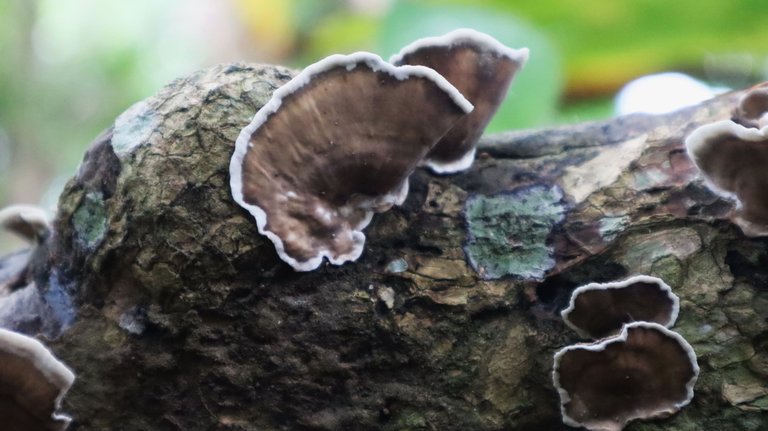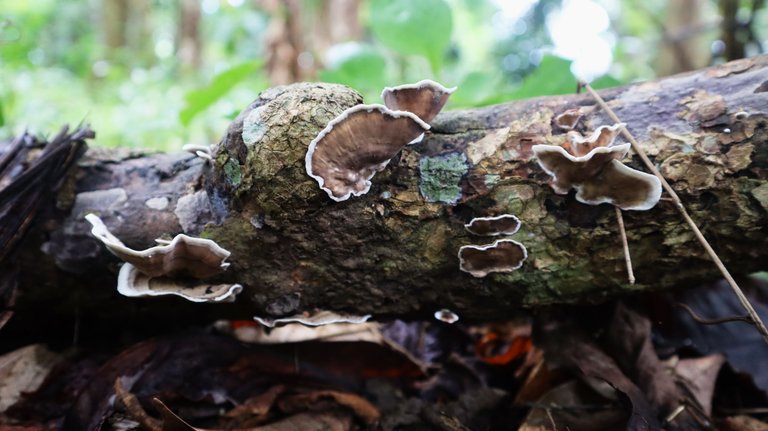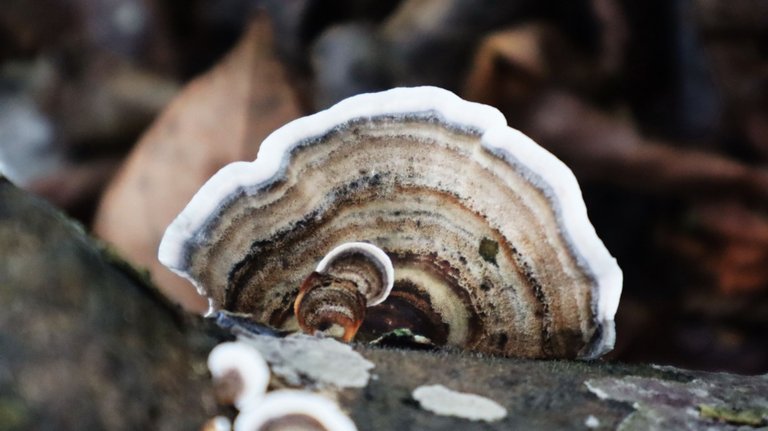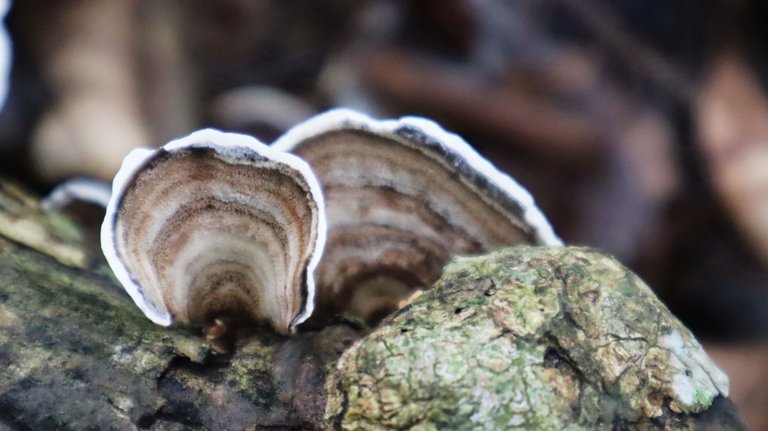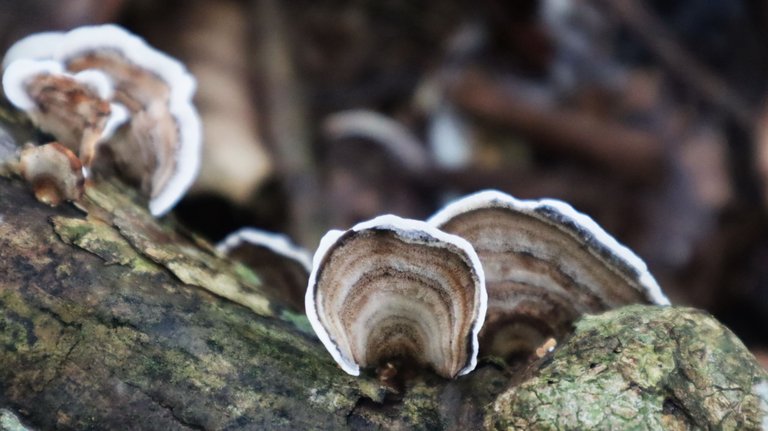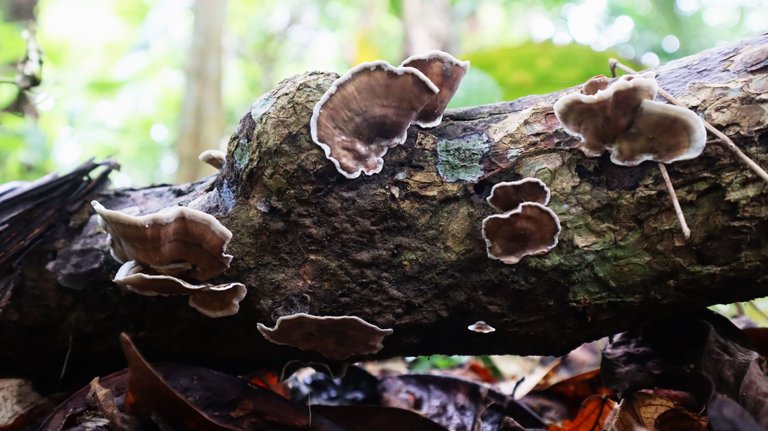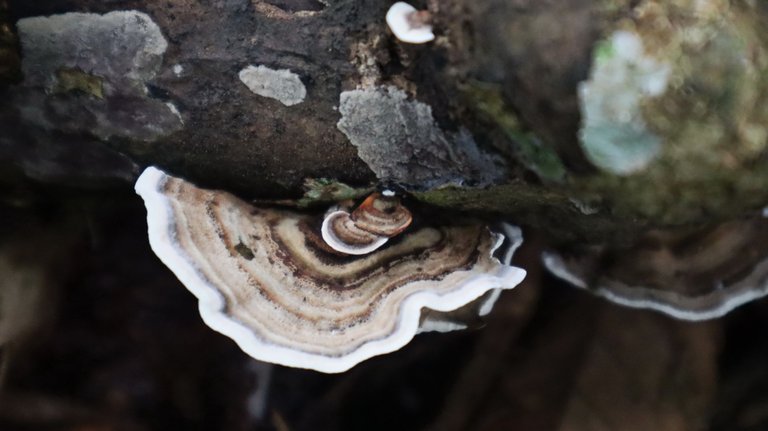To identify the mushrooms I find, usually, I choose the most representative image, and throw it on Google. Then pay attention to the most identical of similar things. I'm lucky if I find that name or that scientific name. But until there, the identification is not complete. I have to check the described characteristics, can they also be found in my mushrooms?
For example, a fungus that is very well known for its extracts used in medicine is turkey tail mushroom, the scientific name is Trametes versicolor, a species of common polypore fungus, which has similarities with Trametes betulina mushroom, both of which are in the same order, but in different genera. Both of them look very similar, but if you examine carefully, the difference is that the fruiting body of Trametes betulina has gills, so it is also known as multicolor gill polypore, while Trametes versicolor has no gills. (Sources: Trametes versicolor; Trametes betulina)
Even worse, when this true turkey tail mushroom is very similar, if not nearly identical, to the false turkey tail mushroom. Both even though they are in different orders but both have the same appearance, both look like turkey tails, both grow on the bark of dead trees, without stems, and the upper surface of the cap shows concentric zones with different colors. However, the false turkey tail mushroom, or Ostrea stereo has a fruiting body shaped like a shell, while Trametes versicolor is flat. And one more part that we have to check is the bottom. That would make a very clear distinction because the underside of a true turkey tail mushroom or Trametes versicolor has a lot of pores, whereas the Ostrea stereo is just smooth, and doesn't have pores, like this.
(Sources:Turkey Tail Mushroom: Identification and Uses; The false turkey tail fungus; Trametes versicolor; Ostrea stereo)
So here comes the false turkey tail mushroom or Ostrea stereo; Ostrea refers to the oyster to describe its shape (Source: Ostrea stereo)
PS: If you have a better, more accurate and easier way to identify fungi, please help me!
PS: If you have a better, more accurate and easier way to identify fungi, please help me!🙏

